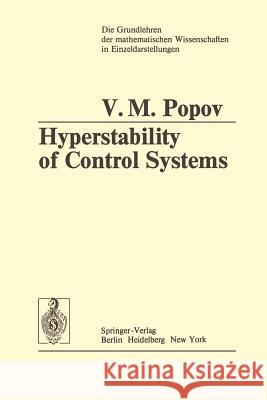Hyperstability of Control Systems » książka
Hyperstability of Control Systems
ISBN-13: 9783642656569 / Angielski / Miękka / 2011 / 400 str.
15 Liapunov's "second method" eliminates this drawback and leads to accurate conclusions regarding the stability of well-defined families of systems. This method made it natural to introduce the new notion of "absolute stability" whose origin can be traced to a work of . A. I. Lur'e and V. N. Post nikov 1]. The results of the many investigations effected to date in the field of absolute stability have been presented in a number of monographs, from which we mention (in chrono logical order) . A. I. Lur'e 1], . A. M. Letov 1], . A. Halanay Fig. 1. 2 1], M . . A . . Aizerman and F. R. Gantmacher 1] and S. Lef schetz 1]. Without going into a detailed exposition of these results (see the final chapter of this book), we shall discuss here only the manner in which one defines the families of systems that are studied. These systems are characterized by the fact that in Relation (4) - which describes the non-linear block B2 (Fig. 1. 1) - the function cp is continuous, vanishes for v = 0 and satisfies the inequality cp( v)v > 0 for every v =/= o. (6) In other words, the graph of function cp is entirely contained in the quadrants I and III; it may have, for instance, a shape similar to that shown in Fig. 1. 2. The object of the study of absolute stability consists in finding a criterion which secures simultaneously the stability of all the systems characterized by Condition (6) ."











